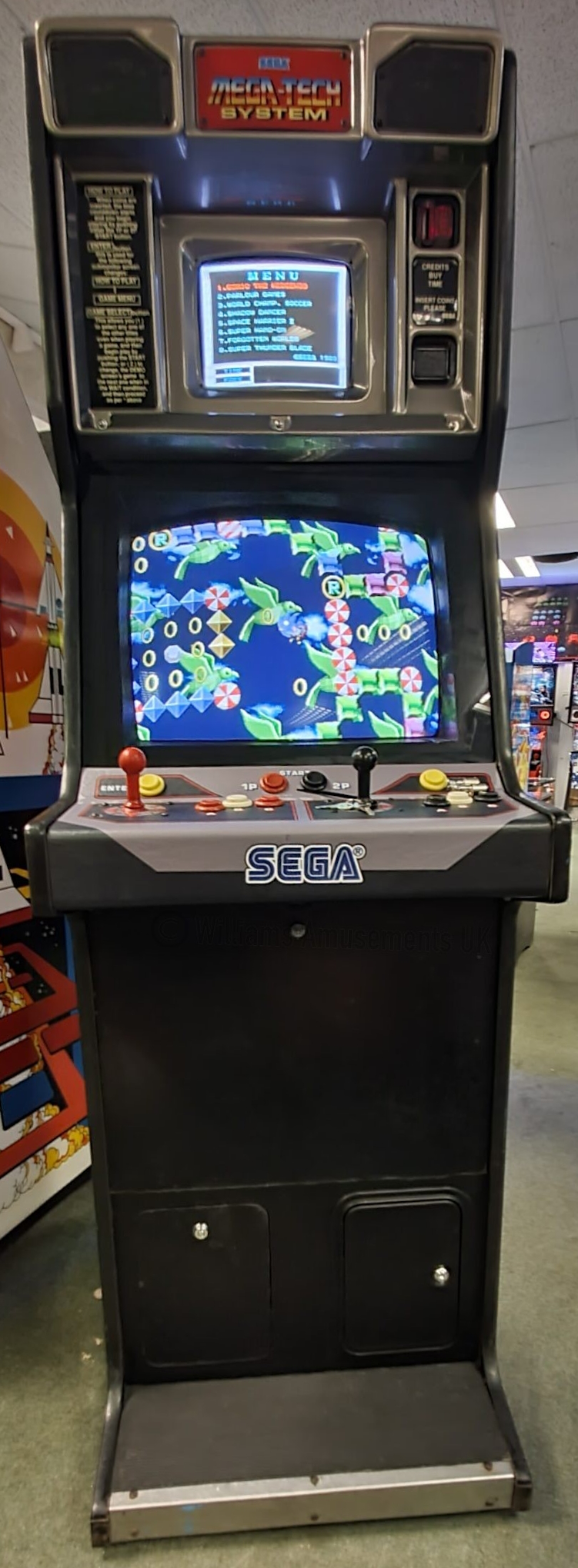Difference between revisions of "Mega-Tech System"
From Sega Retro
old>MathUser |
old>MathUser |
||
| Line 1: | Line 1: | ||
| + | [[Image:MegaTech.jpg|frame|right|Sega MegaTech arcade machine.]] | ||
The '''Mega-Tech''' was an arcade machine that featured ten interchangeable Mega Drive or Master System games in an arcade cabinet, similar to Nintendo's PlayChoice-10. | The '''Mega-Tech''' was an arcade machine that featured ten interchangeable Mega Drive or Master System games in an arcade cabinet, similar to Nintendo's PlayChoice-10. | ||
* First released in 1989 with some of the best titles at the time, such as ''Thunder Force II'', ''Altered Beast'', ''Tetris'', ''Last Battle'', ''Space Harrier II'', and ''Golden Axe''. | * First released in 1989 with some of the best titles at the time, such as ''Thunder Force II'', ''Altered Beast'', ''Tetris'', ''Last Battle'', ''Space Harrier II'', and ''Golden Axe''. | ||
Revision as of 23:57, 1 June 2008
The Mega-Tech was an arcade machine that featured ten interchangeable Mega Drive or Master System games in an arcade cabinet, similar to Nintendo's PlayChoice-10.
- First released in 1989 with some of the best titles at the time, such as Thunder Force II, Altered Beast, Tetris, Last Battle, Space Harrier II, and Golden Axe.
- Games could be changed at any time, and more titles, such as Sonic the Hedgehog and Sonic the Hedgehog 2 were made available. The games were identical to their non-arcade counterparts, and all cheat codes were functional.
- Games were supplied by a Japanese-shaped Mega Drive cartridge, although slightly heavier. The labels were silver and red and only had "Mega-Tech" printed on them. These cartridges are not compatible with a regular Mega Drive/Genesis due to the extra information on them stored to run the second monitor, and differences in the length of the edge connector, number of pins, pinouts, and spacing.
- A second, smaller nine-inch monitor is located at the top of the cabinet. It displayed instructions for each of the games.
- The user pays to play for a certain length of time. When time was starting to run out, the screen flashed green to notify the user that additional credits are needed should he or she want to play more of that game.
